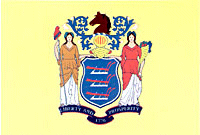
Name: John Bernard Martin II
Rank/Branch: O3/US Navy
Unit:
Date of Birth: 10 December 1945
Home City of Record: Upper Montclair NJ
Date of Loss: 16 October 1970
Country of Loss: South Vietnam/Over Water ** (see text)
Loss Coordinates: 174758N 1082132E (BK200700) ** (see text)
Status (in 1973): Killed/Body Not Recovered
Category: 5
Aircraft/Vehicle/Ground: F8J
Other Personnel in Incident:
(none missing)
Source:
Compiled by Homecoming II Project 15 April 1990 from one or more of the
following: raw data from U.S. Government agency sources, correspondence with
POW/MIA families, published sources, interviews.
REMARKS:
SYNOPSIS:
The Vought F8 "Crusader" saw action early in U.S. involvement in
Southeast Asia. Its fighter models participated both in the first Gulf of Tonkin
reprisal in August 1964 and in the myriad attacks against North Vietnam during
Operation Rolling Thunder. The Crusader was used exclusively by the Navy and
Marine air wings (although there is one U.S. Air Force pilot reported shot down
on an F8) and represented half or more of the carrier fighters in the Gulf of
Tonkin during the first four years of the war. The aircraft was credited with
nearly 53% of MiG kills in Vietnam.
The most frequently used fighter versions of the Crusader in Vietnam were the C, D, and E models although the H and J were also used. The Charlie carried only Sidewinders on fuselage racks, and were assigned such missions as CAP (Combat Air Patrol), flying at higher altitudes. The Echo model had a heavier reinforced wing able to carry extra Sidewinders or bombs, and were used to attack ground targets, giving it increased vulnerability. The Echo version launched with less fuel, to accommodate the larger bomb store, and frequently arrived back at ship low on fuel. The RF models were equipped for photo reconnaissance.
The combat attrition rate of the Crusader was comparable to similar fighters. Between 1964 to 1972, eighty-three Crusaders were either lost or destroyed by enemy fire. Another 109 required major rebuilding. 145 Crusader pilots were recovered; 57 were not. Twenty of these pilots were captured and released. The other 43 remained missing at the end of the war.
Lt. John B. Martin II was the pilot of an F8J conducting a flight over the Gulf of Tonkin on October 16, 1970. At a point about 40 miles southwest of Hai Nan Island, Martin's aircraft crashed. There was little hope that he survived, and he was declared Killed/Body Not Recovered.
(NOTE: Martin's coordinates (174758N 1082132E) definitely place him in the Gulf of Tonkin offshore from North Vietnam, not South Vietnam. The grids (BK200700) are also consistent with this area of the Gulf of Tonkin. It is not known why Martin is listed as having been missing offshore from South Vietnam.)
Since the war ended, nearly 10,000 reports relating to Americans missing, prisoner or unaccounted for in Southeast Asia have been received by the U.S. Government. Many authorities who have examined this largely classified information are convinced that hundreds of Americans are still held captive today. Fighter pilots in Vietnam were called upon to fly in many dangerous circumstances, and were prepared to be wounded, killed, or captured. It probably never occurred to them that they could be abandoned by the country they proudly served.